What to Know About Steel Tariffs - PODCAST TRANSCRIPT
June 24, 2025 at 10:28 a.m.Editor's note: The following is the transcript of a live interview with Melanie Butler, Adam Albrecht and Junny Lee of Sherwin-Williams. You can read the interview below, listen to the podcast or watch the recording.
Intro: Good morning and welcome to Coffee Conversations from the Coffee Shops. My name is Heidi Ellsworth and we are here today to talk about steel and aluminum tariffs. It is the hot topic. I have to tell you, over first quarter going to all the trade shows, there wasn't a conversation I had that this didn't include. A little bit of [inaudible 00:00:44] happening. So we are so honored today to have the experts from Sherwin-Williams here to talk about what is going on, what's going on with steel and aluminum tariffs, tariffs overall and really how can we prepare as an industry? So I want to say a special thank you to Sherwin-Williams for being the sponsor and bringing the idea. It was a hot topic and they brought the experts to really talk to us and help us out.
A few housekeeping things, this is being recorded. So please, within 24 to 48 hours, you'll be able to find this online. Please share it. Feel free to share that out to other companies within your own workspace and your friends and family. This is going to affect everyone and it's going to be just an amazing resource for everyone within the industry. Also, as always, the chat is open. We want your comments, we want your questions and I'm telling you what, you're going to have questions. Please, let's start right now with letting us know who you are, where you're from and what kind of business you have and just start that chat. And feel free to ask questions as we go, or just make comments or do hand claps, whatever you want to do throughout the entire coffee conversations hour.
So let's get started. I have to tell you, we did a practice last week. I was blown away and I'm so honored to introduce and welcome Melanie Butler to the show. Melanie, good morning.
Melanie Butler: Good morning, Heidi. I'm flattered.
Heidi Ellsworth: I'm so excited for this conversation. Could you introduce yourself and tell us what you do with Sherwin-Williams?
Melanie Butler: Sure. Yeah. So my name is Melanie Butler. I'm the Director of Trade and Transportation Compliance currently at Sherwin-Williams. I'm a licensed customs broker. I've been doing trade compliance and customs brokerage work for the last 17 years. I have worked in the metal industry before, actually. I worked for both ERICO and Pentair prior to joining Sherwin-Williams. So steel and aluminum are something I have good knowledge of and good background with before I came to Sherwin-Williams. So happy to be here today. Thank you for the kind words, Heidi. I've been very popular since tariffs have been in the news every day.
Heidi Ellsworth: Well, we're really excited to hear what you have to say. Thank you again for being here today. I'm also so excited to introduce Adam Albrecht, with Sherwin-Williams, who also is an expert who I've learned so much from, just even in the practice. So Adam, welcome to the show. Please introduce yourself and tell us what you do with Sherwin-Williams.
Adam Albrecht: Yes, thanks for having me. Good morning everyone. Again, I'm flattered too, being called an expert. So I'm Adam Albrecht. I've been with Sherwin-Williams for almost 13 years. I'm currently the director of international transportation to and from the United States. My main function for the organization is we procure and manage cost-effective supply chain solutions to help meet the needs of the business and help mitigate the risk to the organization. In my previous career, I've worked for several global logistics providers managing all modes of transportation, both inbound and outbound to and from North America. So, thanks for having me. I appreciate it.
Heidi Ellsworth: Wow. I mean, when you think about tariffs, transportation, logistics, it's all coming together. We all need to be aware of it because it's all going to come back to our supply chain. So Adam, thank you so much. This is going to be a great conversation. And the mastermind behind this conversation who brought us all together and I love working with, we work together every day, Junny Lee with Sherwin-Williams. Junny, can you introduce yourself and tell us what you do?
Junny Lee: Yes, ma'am. Hi, Heidi. Good to see you again. My name is Junny Lee. I'm with the Sherwin-Williams coil coatings marketing team. I've been with the company now going on 11 years. My background prior to coil has been in sourcing and supply chain. So throughout my previous years of experience, I worked with both Melanie and Adam quite a bit, learned a lot from them. And I figured during this time of uncertainty, let's call in the experts. And so really appreciate their support and their willingness to join in on this coffee conversation today.
Heidi Ellsworth: And you know what? Everyone in the chat is saying the exact same thing. What a dynamic conversation and it is top of mind. So, you have a lot of folks here. Thank you everyone. Please keep putting your names in to the chat, where you're from, what you do. Thank you so much. And we're going to get started. Okay. Melanie... Oops, sorry, Junny, I didn't put your slide up. That's Junny. Okay. Melanie, let's start with really an overview so that people understand about the history of steel and aluminum tariffs and where we are today. And we do have a slide up that's going to help you with some of these terminologies that Melanie's going to be talking about. So, all yours.
Melanie Butler: All right. Yeah, so there's a lot going on in tariffs. It's very confusing. It is my job and even I have trouble keeping on top of everything that's going on. So I'll try to make it as simple as possible for everyone. So when we're focusing on steel and aluminum, we're really talking about section 232 tariffs. So section 232 refers to section 232 of the Trade Act of 1962. So this was a provision designed to safeguard national security by regulating imports. So if you remember during the first Trump administration, 2017, 2018, section 232, there was a full investigation and it was used to impose 25% tariffs on steel and 25... Or sorry, 10% tariffs on aluminum. And really, those were the primary forms of steel and aluminum, things that were not made into finished goods yet. So these tariffs were quickly revised. When they were first implemented, they applied to every country, but they were quickly revised to exclude our major trading partners, so excluded Argentina, Australia, Brazil, Canada, Mexico, Japan, South Korea, all of the EU, Ukraine and the UK. And then there was also an exclusion process where manufacturers could apply for an exclusion from these tariffs based on exceptional lead or unavailability of supply from other locations, for example.
However, effective March 12th, following an executive order in February, the exclusion process for those is now closed. All current exclusions expire at their current expiration date. The country exclusions are now revoked. So these tariffs do apply to all of our trading partners, Argentina, Australia, Brazil, Canada, Mexico, Japan, all of the partners that I mentioned just a second ago. And the aluminum tariffs have now been revised to 25%. And then the biggest changes probably we've added steel and aluminum derivative products. So this means anything made from steel and aluminum. It would be like fasteners, household articles, machine parts. In the tariff code this is chapter 73 for steel and the later half of chapter 76 for aluminum. So there are some exclusions, very limited. There are exclusions for products that are made of steel that was melted and poured in the USA or from aluminum smelted in the USA. When this was first announced, the executive order made allusions to that things that were not entirely made of steel, we would only have to pay the additional tariff on the steel part of the article. However, they really rolled that back. It's only about a dozen tariff numbers that you only have to pay a percentage. So I would think that most of the people on this call working in industry, those exclusions are not going to apply for you unless you're using steel or aluminum smelted or melted at cast in the USA.
So that's where we're at with steel and aluminum. But those 232 tariffs are in addition to several other things going on. So you also have section 301 tariffs. So these are the tariffs on specific products from China. These have also been in place since 2018. They've not made any recent changes to these. They are seven and a half to 25%. You also then have what we are calling the IEEPA tariffs. So IEPA is the International Emergency Economic Powers Act. This is where you've heard the president say that we are trying to stem the tide of illegal immigration and fentanyl from Canada, Mexico and China. These are broad tariffs on all products of these origins. So currently, you have 20% on all products of China and 25% on all products of Mexico and Canada, unless they are eligible for USMCA. That's the one big caveat to the Mexico and Canada tariffs, at least for now. There's been a lot of up and down in here and I won't bore you with all the ways this has changed, but as of today, this is where we're at. And the scary thing, or the thing I think maybe people don't understand about this is all of these are cumulative. So all of these might apply to your product.
So Heidi, if you want to go to the next slide, I have an example of how this might look if you are... I picked something that I knew was going to hit all of these tariffs, stranded steel cables from China. So the tariff number on this, which is the number that we use to identify what something is and what duty rate applies to it... It's a global number that we use. The tariff number on this is 73 12 10 2000. The standard duty rate on this from any country is 0%. But when you're bringing it in from China, it applies to the section 301 tariffs that's been in place since 2018. So you have a 25% tariff on this. Now with the section 232 rates, you're also going to have an additional duty of 25%. And then the IEEPA tariffs on all products of China is in another 20%. So effectively, your tariff rate is 70% on this one product. So they do all add up and anything that we are going to see in the future, it's going to act in the same way.
Now, the one caveat to this is all of these are on the invoice price of your goods. It's not as though it all adds up. You don't have to add the duty and then you have more duty on the duty and then more duty on the duty. It's all a percentage of your entered value or your invoice price.
Heidi Ellsworth: Luis just said, "Wow," and so did I. Wow, I don't think anybody really sees this big picture. And this is a huge picture. And one of the things that really hit me the other day, which is so obvious, is how this is going to affect machinery, tools, cars, refrigerators, you name it, anything that mostly has, as you were saying... I do have one question, Melanie, just for everybody. USMCA, what's that stand for?
Melanie Butler: Sure, yeah. So USMCA is the US Canada Mexico Act. I can talk a little bit more about this. It's the new NAFTA. I think everyone was familiar with the term NAFTA. Back in... When did we change it? 2020. In the middle of 2020, it was changed from NAFTA to USMCA. This new agreement was negotiated during the first Trump administration. It is called USMCA in the US. Canadians call it CUSMA and then Mexicans call it T-MEC because we all put our own names first. So I use USMCA as this is mainly a US audience. That is a free trade agreement between the three countries. Free trade agreements have specific sets of rules of origin. And if you meet those rules of origin and can provide the necessary documentation, your goods are entered duty-free.
Heidi Ellsworth: And that's still in place?
Melanie Butler: Yes, that is still in place today. And currently, there is an exception on those IEEPA tariffs on Mexico and Canada that if it's eligible for USMCA, you don't have to pay those tariffs. I would think the majority of the trade that happens between the US, Canada and Mexico is eligible for USMCA.
Heidi Ellsworth: Okay. That's something you don't usually hear about. We're just hearing about tariffs, we're not hearing some of these exceptions.
Melanie Butler: Yeah. So that is a huge exception that's going to save you money. If you are an importer, you want to make sure that you have your USMCA documentation for anything importing from Canada and Mexico, or that you're exporting to partners as well. Though Canada and Mexico have not done the same exception in their tariffs.
Heidi Ellsworth: Okay. Okay, interesting. We have some more resources and some more information that we're going to bring back in just a little bit. But let's move over to really the potential challenges to the supply chain within the metal construction industry and what's all happening there. Adam, can you take us through that, what we should expect to see?
Adam Albrecht: Yes, thank you. So basically, when we talk about these tariffs, there's a couple things that happen in the industry. One is, the spot market ocean freight rates and then capacity challenges. So in the ocean spot rate market, we typically see a surge in the container freight rates a month or two prior to the new tariffs taking effect. There are several spot market indices. One is the Shanghai Container Freight Index. There's another one called Drewry Container Freight Index and then there's Xeneta, which are three of the most popular that are being used today. Companies will generally usually pull orders ahead, building the inventory to beat the additional tariffs. According to Drewry, US imports from Asia increased 12% year over year in January. This caused capacity issues and ocean liners, which helped drive up the rates, not to mention the capacity issues. There were congestion in the origin ports out of Asia as well as the congestion into the United States. According to Drewry, the spot rates declined for the previous six months prior to a 27% surge in January, the container freight rate from Shanghai to Los Angeles was 57% higher in January of 25 versus January of 24.
Heidi Ellsworth: Wow.
Adam Albrecht: Yeah. Chinese New Year also played a factor in this because this year, the new year was in early February. So it's really hard to predict what percentage of cargo was moving to beat the tariffs, but it did play a significant role in that. And the good news is the spot rates now have declined 15% in February and we're expecting additional decreases in the coming months due to several reasons. The pull ahead orders, the capacity is going to increase because we have new vessels coming aboard in the coming months providing additional space and allocation for container cargo. So those are the main reasons how it affects us when it comes from a transportation standpoint.
Heidi Ellsworth: And Adam, as you're looking at this too, I mean obviously in construction, with every industry, but in construction, getting our supply chain to be consistent, we know it's going to be there on time, we're going to be able to get the job started, all those kinds of things. Do you see delays due to the tariffs in the supply chain of whether it's in raw materials or finished materials going out to the industry?
Adam Albrecht: Just speaking in general, yeah, like I mentioned, there is congestion all around this. So there's different pockets of congestion in challenges of getting cargo out of Asia depending on the time of year. So for instance, there's generally a peak season come July, August every year and that's due to the holiday seasons. So everybody's pulling inventory starting in July, August and ramping up their inventory. I mean, everybody knows you go into a store and Christmas decorations are out in October, just shortly after Halloween, so they're already pulling that inventory. So that's typically what we call the peak season. Peak season time is July, August through, I would say November, depending on what year it is.
But then you also have another challenging issue. You have what we call carrier management. So ever since the pandemic, carriers basically control the capacity. So if they feel like their capacity is only really at 75, 80%, what they'll do is they'll pull service strings. And what a service string is, is they'll pull... For instance, all the carriers have service strings that ship weekly. So if they feel like their capacity is down at 75% for any given week, they'll pull a service string from Shanghai to Los Angeles, for example and they will omit that sailing for that week to cause capacity challenges at origin. And then that will bolster their capacity up to 95, 98%, obviously to create more revenue for the actual vessel. They don't want to sail at 75%, they want to sail at 95 to 98% because that's their maximum value of their return.
So those are the two main areas. Obviously, there's other challenges with that. We had the East Coast potential strikes for the terminals, dock workers, the labor unions on the East Coast. So you saw some pre-ordering of cargo to... The first one is set for October 15th, I think. Or October 31st was the deadline. So there's a lot of orders being pulled ahead of that. As well as they came to an agreement in October that they would push this out for another six months. So January, there was another push for that as well, mainly talking about the transatlantic trade, Europe to the United States here. But so you have different pockets of where you can see congestion, but there's ways you can try to avoid that. And I'll probably get into that a little bit later into the conversation.
Heidi Ellsworth: Yeah. Wow. A lot of moving pieces here that are going on. Melanie, any surprises on... And I feel silly even asking that because it seems like it's a surprise every day. But any surprises on really what's changing with these tariffs? With all of your experience, what has surprised you?
Melanie Butler: Yeah, I mean, I think all of this is both a surprise and not a surprise. I think it's a huge surprise at the speed at which this is happening and the speed at which changes are being made. Like I said, I can barely keep up and this is my job. The very first day, inauguration day, was when we got the America First Trade agenda and we started down these paths of issuing tariffs and setting out a plan for how the president intends to implement more and more tariffs. And he talked about this on the campaign trail a lot. So it wasn't a surprise. The surprise has been the speed. And I think that all of us in the industry, me working at a private company as well as our customs brokers partners that service everyone as well as I think probably the staff at customs itself who are being required to implement this, we're all having trouble keeping up. We're having trouble making changes to software and to systems and to programs that are able to actually file these customs entries and transmit this data and keep track of all of it. Supply chains are having trouble keeping up, trying to figure out, "Well, what is our cost this week of this material?"
So this administration is using all their available tools to implement their trade agenda and I don't know what's going to come next. It's something new every day, it seems like.
Heidi Ellsworth: Every day.
Melanie Butler: Yeah. So the speed is for sure surprising, but it's not surprising that the administration is using all these tools. They said they would and they're doing it.
Heidi Ellsworth: They said they would. Yeah, exactly. Junny, with all of this on the global scale and talking about all this, how are metal manufacturers adjusting their supply chains or working with suppliers to work through this? Because there's a lot to work through and like I said at the very beginning, everyone's talking about it. So what are you seeing and hearing on the metal manufacturer front?
Junny Lee: Oh, absolutely. And I think it ties in a lot with what both Melanie and Adam advised throughout the session today. It's not really a one size fits all strategy. I think obviously it comes down to what makes a whole lot of sense for the respective companies. But we're hearing some stocking up on inventory. We're hearing that they may not be expecting too many issues. But a lot of it just comes down to what we're learning, understanding your supply chain, especially those HTS codes. Because as Melanie mentioned, that's really the best way to start looking into getting transparency and visibility into where your products are coming from.
Heidi Ellsworth: Yeah. And it is interesting, because as I've been talking to people, I've heard, "We buy domestically, so this isn't going to affect us. We have a backlog, so we feel like we can get through this. It's going to be okay." But they're also obviously pricing and figuring all of that out. I've heard Junny and it sounds like you have too, but some people are purchasing ahead. And to your point, Melanie, they were listening last year on the campaign trail. And to what Adam said too, a lot of purchasing ahead. So that's going to create more supply in the market. But do you see people really just holding onto that and working through it? Any thoughts on how that's going to... Because usually, when there's more supply, prices go down, but that's not what's happening.
Junny Lee: Right. It comes out to what's next. What's going to happen next after this wave of tariffs? Stocking up on inventory is a great strategy, but what happens when you start depleting that? And then the question is, do you start shifting your supply chain strategies around too? I think with uncertainty may come opportunity in some ways. So once we learn more about how this impacts businesses, there might be light at the end of the tunnel for a lot of folks.
Heidi Ellsworth: I want to remind everybody, please feel free to start asking questions as we go, or make comments. I'm sure you have a lot of questions. I know I do. So one of the things that I wanted to talk about, not only are we... Melanie, you showed a perfect example of what the potential of a tariff could be, up to 70%. Or it could be nothing if we talk about the USMCA. But with this kind of uncertainty and dealing with tariffs and the supply chain congestion, how have companies in the past and in your experience, how have they mitigated their exposure to risk and how have they worked through that? What is some of your advice for the industry?
Melanie Butler: Yeah, I mean, a lot of my advice echoes what Junny's is. I mean, well, one, this is unprecedented. The first time it happened, we were all a little bit in shock that we were really doing this. And now we're not in shock, we're just reeling, trying to keep up. But yeah, I mean increasing inventory in advance of proposed tariff actions. So right now, really the focus is on China and Canada and Mexico. So bring in some of your supply from Europe that still doesn't have any additional tariffs, at least for the time being. If you are an importer, there's a lot of different strategies that you can use to mitigate these risks. I don't know if anyone's familiar with the idea of foreign trade zones? When you can import into a foreign trade zone, you can then time your imports to bring them in at the most advantageous time. So we're expecting changes in tariffs next week. If they're advantageous, then take it out of your foreign trade zone next week before it changes again.
And then knowing your supply chain. Even if you are purchasing domestically, know the country of origin of those goods so you know how this is going to impact you. Just because you bought it down the road doesn't mean it wasn't made in China or wasn't made in Canada. Ask that question. What is the country of origin of this good? Where are your suppliers getting their supply? How's that going to impact you? If you're an importer, you can also utilize, obviously, free trade agreements. I talked a lot about USMCA. That's a huge one that we can use in North America. Unfortunately, there isn't one with China, unsurprisingly. As well as if you are manufacturing or moving a lot of inventory around North America, something to look into is your duty drawback potential. There are a lot of vendors in the marketplace, consultants in the marketplace that can help you set up a duty drawback, which means that you can get back some or all of the duty you pay on... Say for example, your raw material's going into manufacturing in Canada that you've imported previously, you can get back duties for things that you have imported and then re-exported. So if you're importing product into the US and then selling it into Canada, for example, you can get back some of that duty. Unfortunately, all these extra tariff actions are not eligible for drawback, but you can save on your standard duty rate using that.
So yeah, there's a lot of trade consultants working in this space that would be happy to discuss options if you are the direct importer. If you're not the direct importer, definitely know your country of origin and know how this is going to affect you. What's your supplier's supply chain.
Heidi Ellsworth: Yeah. And Melanie, we have some good questions coming in. From Chris Salazar... Hi, Chris. So glad you're here. He said, "I am wondering if the commutative tariffs in Melanie's sample slide are all new, or were some of them already in place?"
Melanie Butler: Yeah. Section 301... So the standard duty rate... Let me look at what's in that slide.
Heidi Ellsworth: Yeah, I'm pulling it up right now.
Melanie Butler: Yeah, so the first line on that is standard duty rate. That is your standard duty rate no matter where it's coming from for any trading partner. So on this example I picked the duty rate happens to be zero. The section 301 tariff on products from China, those have been in place since 2018. Section 232, those aren't necessarily new. It is new that it applies to items of chapter 73. So things made of steel. Previously, it was more raw steel products. Now, articles made of steel are also subject to that. So the section 232 is new when you're talking about steel derivatives, things made of steel. And then the IEEPA is new as well. It was actually announced inauguration day that we were going to do that. So I think those were effective back in early March. March 4th was when that was initially effective, the IEEPA. So that is new as well. And if you remember, originally it was 10% on China and then it pretty much immediately went to 20. So number three and four on this list are brand new.
Heidi Ellsworth: Great. And then Maurice is asking, "Is there anything contractors can do at this point to lessen the impact of these tariffs?" I'm going to open that up to all three of you. By the time you get to the contractors, it feels like, as we're talking, it's like you need to be talking to your manufacturers and know where their supplies are coming from.
Melanie Butler: I don't know if Junny, you have anything interesting to say on this one, because once you get down to the contractor level, you don't have a lot of control, unfortunately. When you're the importer, when you are a large purchaser of these articles, you probably have some influence. So there's some things you can do, but when you get to the contractor level, I'm not sure what you can do other than know where you're getting your stuff.
Adam Albrecht: Yeah, I was going to say... Sorry to interrupt, Junny. I was going to say something like, obviously you do your due diligence. Understand where you're buying your material from, from the country of origin. And then shop around because some may have that inventory that they pulled ahead and are selling it at a discounted price and don't have the tariff fees on there at this point. So just shop around and do your due diligence on where it was manufactured and where you're getting your supply from, is the only comment I would put on that.
Heidi Ellsworth: Yeah. Junny?
Junny Lee: No, I agree. As a consumer, just asking questions and being more inquisitive and inquiring about the origin of products that will be installed, that way that information can also be relayed to the homeowner or your customer in case they ask too. I think a lot of what's going on in general and especially with these coffee sessions, this multiple education part, understanding current events and then getting that knowledge to utilize for your own businesses.
Adam Albrecht: Yeah. I mean, almost [inaudible 00:32:21].
Melanie Butler: Go ahead.
Adam Albrecht: Oh, sorry, Heidi. I'll give you a real life experience. I live in Florida and was affected by the couple of hurricanes last year in October. We don't have hurricane windows, so I've been shopping around for hurricane shutters and I decided to go with the aluminum shutters. And so the people I were talking to at the end of last year saying, "We're going to see price increases," and I knew wholeheartedly that this was going to happen, so I pulled the trigger and bought before and locked my prices in before these actual tariffs hit. So I'm pretty happy about that. But otherwise, I would've saw a 25% increase on the aluminum that's going around on my shutters. So again, it pays to shop around. As a contractor, you can do that as well, depending on the contracts you have. But yeah, just a good story that can bring it to light to everyone here.
Heidi Ellsworth: Yeah. And from a contractor standpoint, I'm going to recommend listening... I just did a podcast with Trent Cotney last week and it'll be out probably next week. And that podcast talks about this topic exactly. What do your contracts say? Do you have price increase? Do you have those types of things in your contracts to your homeowners or to your building owners that allow you to have some flexibility on what happens when you have tariffs, when you have transportation, when you have these price increases that may be happening that are out of your control? And so from the contractor standpoint, there's a lot that you can do just within your contracts. And then to all of your point, the conversation hasn't happened before, or maybe it has, but it doesn't happen as much where you go to your supplier and say, "So, where do you buy your aluminum and steel? How does that work?" I think those conversations are going to become a lot more obvious, where people will be doing that.
And also, Junny, as we're looking at the industry, you've got to think at how many layers there are. So if you're a contractor installing metal siding or metal roofing, you're either working with a local sheet metal shop who is buying from a coil manufacturer or you're buying through distribution, who's buying from a manufacturer, who's buying from a coil manufacturer. And of course all of it has the beautiful coil coatings on it from Sherwin-Williams. I just had to throw that in.
Junny Lee: Yes, ma'am.
Heidi Ellsworth: But those conversations may not be one and done. It may be one of those things where sheet metal shops are also asking those same questions and manufacturers are asking those same questions of their coil providers. Can you talk a little bit about that?
Junny Lee: Oh, for sure. And yeah, with a lot of concern and uncertainty, I think this could be an opportunity where it strengthens relationships, having these conversations with your supplier, with your distribution partner, with the contractor, with the OEM [inaudible 00:35:31], anyone virtually in the value chain connected by Sherwin-Williams coil coatings. But no, I think it's a really good point. Just having these conversations can really only benefit each person. That's part of the process. And ultimately, it will trickle down to the homeowner or the ultimate customer. But knowing your HTS code, that will be very, very beneficial to the end user and any user in the supply chain.
Heidi Ellsworth: HTS code, how often do we hear that or even think about that?
Junny Lee: Right.
Heidi Ellsworth: One of my questions around that too is, we have a number of manufacturers on here. Thank you everybody in the chat, because we have manufacturers, contractors, we have distribution on here. So the thing that struck me and I said this earlier, but I want to go back to this and maybe Melanie, you can start us off, is this is not just going to affect metal manufacturers, coil manufacturers. This is going to affect machinery, equipment. Can you talk about for the contractors and then all these manufacturers who are on here too, looking at what they bring in and who they bring it in and how much steel and aluminum does it have in it?
Melanie Butler: Yeah. And even beyond steel and aluminum, you'll see that a lot of these tariffs apply to everything across the board, not just steel and aluminum. Steel and aluminum is particularly hard hit because some of those tariffs are one, two, three times, getting hit with three different types of tariffs. But yeah, it's going to affect everything that is imported. So beyond steel and aluminum, all of your machinery parts, all of your accessories, perhaps even your packaging, if any of that is imported, particularly from China, it is going to be affected by these tariffs. So if you haven't done so already, which this is what this is pushed towards and I think we've seen a lot of this in the industry already in supply chains is diversifying that supply chain. Have two or three or four sources for something so that if one is hit with a tariff or if one is hit with a natural disaster, for example, which we've also seen a lot in the last few years, that you have that backup ready to go, that you have alternative sourcing in place.
But yeah, so it's not just steel and aluminum. But it is everything of steel and aluminum, like I said, including machine parts, including fasteners, including things for your house as well. I think we've all heard in the news that cars are going to get more expensive because of a lot of these tariffs and I think there's more coming on cars too.
Heidi Ellsworth: Adam?
Adam Albrecht: Yeah. To piggyback off what Melanie mentioned there, I think it's really important to educate yourself around this/ you don't have to be an expert like Melanie, but just understanding the current and emerging global shipping markets too from a transportation perspective, just stay abreast of that. Stay up to date on market intelligence, what's happening globally, because we are still buying globally as a US country. And if you're an importer, having a great relationship with your current logistics providers or ocean carriers and using them as a resource, we rely heavily on our global logistics providers as a great source of information. So that's really important. Again, education. I mean, we're spending the money now, but if we would've done our due diligence and was actually looking at this six, eight, nine months ago, would we be in the same position or would we be in a better position? You can always diversify not only your supply, but how you're moving transportation from different regions of the globe. We can use Canadian ports, we can use east and West Coast, we can use air freight. But again, all of this comes at an additional cost. So you've just got to be able to do your due diligence and really understand what's going on in the marketplace.
Heidi Ellsworth: And Adam, we're talking a lot about overseas, but what about transportation between Mexico, Canada, North America? Is there concerns there? And then obviously, adding on the uncertainty of exactly where we're going with tariffs. And now the thing I just learned this morning, USMCA, what are you seeing? Because we have a lot of partners. In fact, I know we have some folks here from Canada this morning and those are important, those relationships. Our relationships are important. The raw materials, the finished goods. Talk a little bit about that.
Adam Albrecht: Yeah. So you're going to see congestion from equipment challenges to border congestion and how quickly items are going to be cleared through the borders, whether it's on the northern or southern border. So that's going to play a major role in this. So obviously, you want to put some additional lead time in for your transportation if you're importing direct from those two different countries. Like Melanie said, USMCA is still in play, so as long as you have your paperwork and everything is good, you're not going to see the additional tariffs there. But I would just account for additional lead time when it comes to transportation.
Heidi Ellsworth: And a lot of that is just because we're changing processes at the border of what they're checking for. Is that correct?
Adam Albrecht: Not necessarily what they're checking for, but the confusion behind all of the tariffs causing delays in paperwork. Do you have your correct paperwork? Is the paperwork value absolutely correct? Does it have the right country of origin? All of the items needed to apply for and use the USMCA. So those are the biggest delays that you'll see on the border along with capacity. So I would just allow another three to seven days for your overall lead time coming from Canada and Mexico, just as a buffer.
Heidi Ellsworth: Melanie, Canada and Mexico?
Melanie Butler: Yeah, Canada and Mexico. Well, anecdotally too, we've seen obviously the relationship with Canada and Mexico and the US is a little antagonistic right now. So we've seen at least anecdotally some borders with intentional slowdowns or intentional low staffing, that things are not moving as quickly. We've also seen it on the US side to our Canadian and Mexican partners. So the US has also been playing that game of, "Oh, we're going to work really slowly today. We're only going to clear 100 containers rather than 1000." So yeah, it's concerning. And the speed at which that trade normally moves, it is providing a lot of challenges for us who work in customs and for importers because you have to comply with all these new tariffs and provide all that new paperwork that you maybe haven't done before if you haven't done USMCA before, or if you have to make declarations about the steel content or the aluminum content, for example, causing a lot of headaches and delays in the customs clearance process.
Junny Lee: That's interesting, because trade tariffs and all that, you hear about the-
Melanie Butler: Oh no, Junny froze.
Junny Lee: Okay, it's Junny. I thought it was me. I was like, "Oh no." There we go.
Melanie Butler: Oh, I think he's back. Junny, we lost you for a second. Sorry.
Junny Lee: Oh, I'm sorry. But one thing that I never knew about was about the posturing that countries can do when things are looming over their heads or our heads as consumers. So yeah, pulling resources at the border for customs clearance is one thing I did not think of at all. That's interesting.
Heidi Ellsworth: And this is a little discouraging. We do have a good question here. Do you see additional friction with companies that manufacture/ship through Taiwan? Adam? Melanie?
Melanie Butler: I haven't heard any rumblings about Taiwan. There's a lot of different proposals about the EU. There's obviously the proposal that just came out late last week about countries that buy oil from Venezuela, but I haven't heard anything specific to Taiwan, so don't have a good answer for you there. I don't know if Adam has?
Adam Albrecht: Not from a transportation aspect. I haven't heard much either, so nothing really to report there that I can speak of.
Heidi Ellsworth: So Tom, if you hear anything, let us know. We want to share that information. I have a question about other types of metals. So when we're looking at copper or zinc or some of the more exotic metals that are imported, what does that look like?
Melanie Butler: Yeah, so other types of metals, they're going to be caught in all of these tariffs, though there aren't additional tariffs on other types of metals other than steel and aluminum yet. There was a 232 investigation initiated just last week on copper. But they're going through the longer statutory processes for those. So there's a report due within 270 days, so it might be quite some time before we see anything about copper. Zinc, for example, is going to be caught in any 301s that might have already applied back since 2018. And then in those IEEPA tariffs of the blanket 20% on China, 25% on Canada and Mexico. And I don't know if this matters to anyone on this call particularly, but wood and lumber are also subject to 232 investigations currently. But it'll be sometime, I think before we see results of those.
Heidi Ellsworth: Any other questions, please keep going. Thank you, Tom. We want those questions coming in. But I have a question, in that... And this was not on your list of questions, so I'm going to hopefully not catch any of you off guard, but we're talking a lot about knowing your country of origin, the melt and pour or smelt and pour. Can you talk a little bit about US, domestic production of aluminum and steel and really what we're looking at there? Junny? I'm not sure who to ask. But for everyone out there, what are we seeing from the potential of US production?
Melanie Butler: I don't know a ton about the US's steel and aluminum markets anymore, but I think the intention of this is really to protect the US steel and aluminum industries and the national security risk of not having a strong steel and aluminum industry. So we do obviously have a huge steel industry here in the United States. There absolutely are US origin steel products that you can buy, US origin steel and aluminum raw materials that you can buy to make your end product. However, I think that you're going to see those suppliers increase their pricing because all of their competitors have to increase their pricing with the additional tariffs. So that's what I would expect. Again, not an expert in domestic steel markets.
Adam Albrecht: Yeah, I would echo what Melanie mentioned. I'm not an expert either, but yeah, I would imagine that's probably what's going to happen.
Heidi Ellsworth: Junny, anything that you've heard on that?
Junny Lee: No. That's a really good question. And I could ask around to get more and more concrete answers. We see the historical evidence when it comes to trade and whatnot specific to the steel industry. That's something I can dive into a bit more and learn more about as well. So I'll follow up on that question. That's a good one.
Heidi Ellsworth: And we're going to be following up on that too because I think that's really important. And for everybody out there who's listening, what does our... And I've heard this from a couple of different manufacturers that we're going to buy domestically. And we know government works at changing habits. And so to your point, Melanie, there are reasons behind some of this and that may be one of the things for all of us to be more familiar. We're so global. And personally, I'm always careful not to put all my opinions out there, but I think we want to be global, but we also want to be very aware of what we have right here on the home front and what is available and how that can help you.
And so again, to the question we had earlier on what can contractors do? Really having those conversations and asking, "Are you buying [inaudible 00:49:12] manufacturer the other day who said, "Do you think there's value in saying we're a US-made product?" And I'm like, "Yes. I think there's always value in that and you should let people know that." That doesn't mean there's less value in it if it's made somewhere else. It just means knowing the origin. And you guys have really brought that home to me today of really understanding the origin, or multi-origins. And Melanie, to your point, if it's poured and smelted here, but they send it off to be made somewhere else, then you need to know that, that's a lot of paperwork. How do people handle that?
Melanie Butler: It is. It's a lot to keep track of. It is a lot of additional administrative burden on supply chains and on your trade staff. You'd have to come up with your own best practice. And I'll be honest, Sherwin-Williams doesn't have one yet. It's the only thing I'll say about Sherwin-Williams on this call, that we're also having those struggles of how do we collect this data? How do we make sure it's on file? How do we get that information to our brokers? How do we communicate this across our whole supply that we now need this to all of our suppliers? So it's an interesting challenge. Absolutely.
And I want to make a comment you said about the whole idea of this is changing behaviors. Some of these things have been in place since 2018, however, business does not change as quickly as the president can tweet. So there has been evidence that these things have worked. We see it in the import numbers, we see it in the types of things that are being imported as well overall as an economy. So there has been a shift as a result of this first round of tariff actions. However, it moved so much slower than the tariff [inaudible 00:51:07]. So these things, unfortunately, they do have some effects.
Heidi Ellsworth: That was going to be my next question, the financial effect that we would see in the industry... Or not in the industry, in the economy overall. And I know we're not economists on this conversation, but Melanie, as you guys are looking down the road and Adam, as you all are looking down the road, this will affect at some point what's happening in the economy.
Adam Albrecht: Yeah. I'm not an economist, but I would say yes in the interim, but I think over time it would almost even itself out. What that means, I don't know, but that's what I've heard. That's what I've read. And you can't always believe what you hear and what you read. So again, what Melanie said earlier, this is unprecedented. I mean, the speed to which it's happening, all of that. I can tell, you from my experience, the volume on transportation coming out of China from the 301s really hasn't changed much from my perspective. You have seen shifts in manufacturing to other countries. But in essence, from my perspective and what I've seen and heard and read is the 301s haven't affected the US as much as they thought it would. We're still importing at an alarming rate. So the balance of trade is still out there, all of that. It's just this round and all of the posturing, all of the quickness to get these tariffs in place is just unprecedented.
So who knows what's going to happen. It's almost like their supply chains are doomed ever since the pandemic. I mean, if there's not one challenge, there's another. I mean, we had the ports last year, we had a few years ago the potential strikes on the West Coast. Now we had it on the East Coast. Now we have the tariffs. I love my job because I've got job security at the end of the day.
Heidi Ellsworth: Well and not to mention natural disasters.
Adam Albrecht: Yeah, absolutely. And that's just another thing, right?
Heidi Ellsworth: Yeah. I mean, we're seeing that every day.
Adam Albrecht: Yeah. That's my take.
Heidi Ellsworth: So we're getting to the end of the hour. This has been so fascinating. I do want to talk a little bit about, again, from the contractor and the sheet metal shop perspective. We have a number of large roofing contractors and metal contractors out there who have their own sheet metal shops. They're working with our friends at Metal Forming. They are with their own machines, their own metal vending and fabrication and then they are buying coils and they're out there doing things. And we are going into season. We already are seeing the storms, some places we're actually seeing some spring. It's pretty exciting. So as these contractors and sheet metal shops who have their own metal forming machinery, now is the normal time they would be stocking up, but I know we have this April 2nd, which is next week looming in front of us. Melanie, any thoughts?
Melanie Butler: I mean, I think that if you are using domestic supply, you're probably going to be in a very good position coming up and I think maybe you would even see an increase in business. Not so much that the pricing will be so out of control on foreign imported goods, but that the uncertainty around it is really, really painful. We don't know what's going to happen next week. We don't know what's going to happen next month and if that coil supply from China is now going to be 200% duties. So if you're using domestic supply... If you're not, I think you should look into using some domestic supply, but I would guess you're going to start getting some of those questions from your customers of are your products going to be affected by tariffs? And I think you'd be in a really good position if you can say, "Well, no, not really because we are buying US domestic steel."
Adam Albrecht: Not only from a price perspective, but from a supply perspective. I mean, if they are only buying foreign or only buying US made, then potentially you'll have some supply disruption.
Heidi Ellsworth: Yeah, I agree. I think between pricing and between supply... But I like what you said and you all three have said it in your own way, that anytime you're looking at these kinds of things, there's also ways to look at opportunity. So being strategic within your company and having strong communication with [inaudible 00:56:22] supply chain and then with your customers could actually put a number of contractors, sheet metal shops in a position to be able to really actually provide needed services that maybe other people are struggling with. Junny, can you wrap up with us on that?
Junny Lee: Well, absolutely. I think that's ideal, just being able to communicate what you're learning to the next person in the value chain and then transferring that knowledge across the board. Because ultimately, we want the homeowners to be very confident in what they're purchasing. And so being able to teach everyone around you that, "Hey, I know where my product's coming from. I know that they're made in America. I know that they're imported from country ABC." Just having that knowledge, being able to speak to it to the individual that you are marketing or selling to, I think really puts them in a really good position. And I really do think showing that you have that information helps strengthen the relationships across the board with your supplier and with your customer.
Heidi Ellsworth: Yeah, I think it's so important. We have a question from [inaudible 00:57:37]. Who normally absorbs the tariff? Manufacturers, consumers or retailers? Who would like to take that?
Melanie Butler: Who ultimately absorbs it, I don't know. But the US importer is the one who pays it. It is not paid by any foreign party. So generally, that is then going to be passed on to whoever they are reselling their goods to, all the way down to the consumer.
Heidi Ellsworth: So it really hits it, most of the time, all the way down.
Melanie Butler: Yeah. I don't know that there's any company that's in a position to absorb a 25% cost increase and not pass on that to their customers.
Junny Lee: That might be the topic of the next conversation, right? [inaudible 00:58:23].
Heidi Ellsworth: I tell you what, there's a lot to unpack here and you all have been amazing. We have some thank-yous coming in from folks who thank you for your wisdom and for the information that was here today. And I can tell you, I learned an incredible amount. And I'm just going to share here real quick some resources with everyone to be able to... And if you want to take some screenshots while we have this up. Let me make sure I'm showing the right thing here. I am. So these are some proposed tariff actions that we've already talked about, but just summarized. And then also resources and some links where you'll be able to get more information and continue to stay in front of this.
Melanie Butler: These are one of my favorite news links from a customs broker that I like. I think they do a good job, expediters, but you can also get them from many customs brokers. And then the other two are just law firms that work in the trade space that put out a lot of information about trade actions. And all three of these have newsletters that you could sign up for if you want to stay on top of what's going on with tariffs.
Heidi Ellsworth: Awesome. And as you know, this is on demand and you'll see it in 24 to 48 hours, so if you don't get a screenshot here, you can watch this again or just fast-forward so you can get these resources. And then Adam also has some great resources. Adam, you want to mention just real quick on this slide?
Adam Albrecht: Yeah. I mentioned both of these companies in the previous conversation, Drewry and Shanghai Container Freight Index. This allows you to see where the market is going on... The spot rate market, I should say. Unfortunately, there is a subscription you need to pay for for this, but you can definitely get the information from your logistics provider. And then Freight Waves and JLC are just market intelligent platforms that you can get information on the global containerized industry.
Heidi Ellsworth: Excellent. I want to say thank you again. Thank you so much to Sherwin-Williams for presenting this, for sponsoring this conversation and for all of your wisdom today. It's been amazing. Thank you all.
Adam Albrecht: Yes, thanks for having us. Appreciate it.
Heidi Ellsworth: Thank you.
Adam Albrecht: Take care, everyone.
Outro: Take care. And I want to invite everybody, April 10th is our next Coffee Conversations and it's going to be on referrals. Oh my gosh, this is age-old, one of the most important things for your business. Be sure to be there on April 10th. We will be seeing you all on the next Coffee Conversations. Thank you all. Have a great day.
Recommended For You

Seth and Ashley Pietsch & Jessica Hale - The 10 Things you Need to Know about Roofing Insurance - PODCAST TRANSCRIPTION
Read More ...Reed Hitchcock & Lynn Picone - ARMA’s 2024 Excellence in Asphalt Roofing Awards - PODCAST TRANSCRIPTION
Read More ...
Jack Gottesman - The Roofing Ahead in 2025 - PODCAST TRANSCRIPT
Read More ...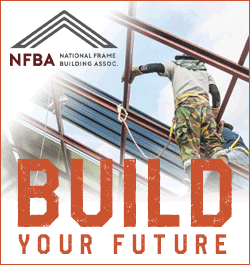
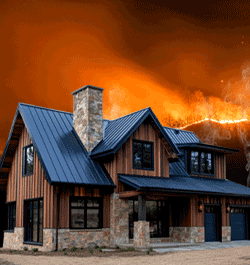

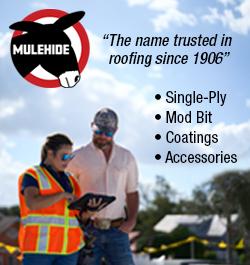



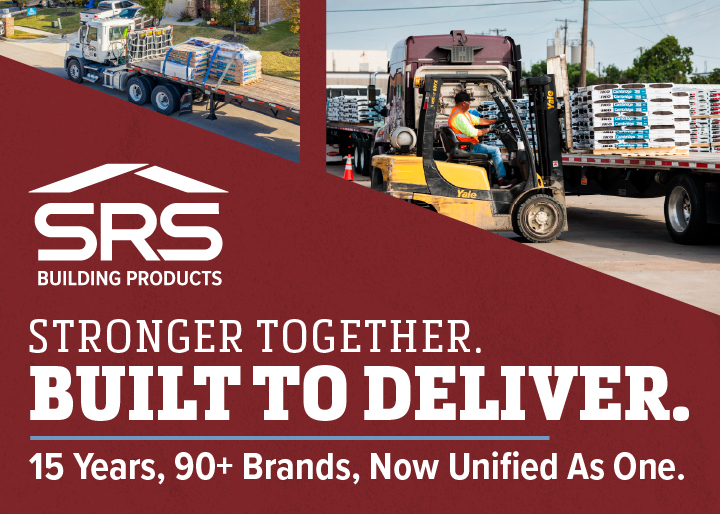
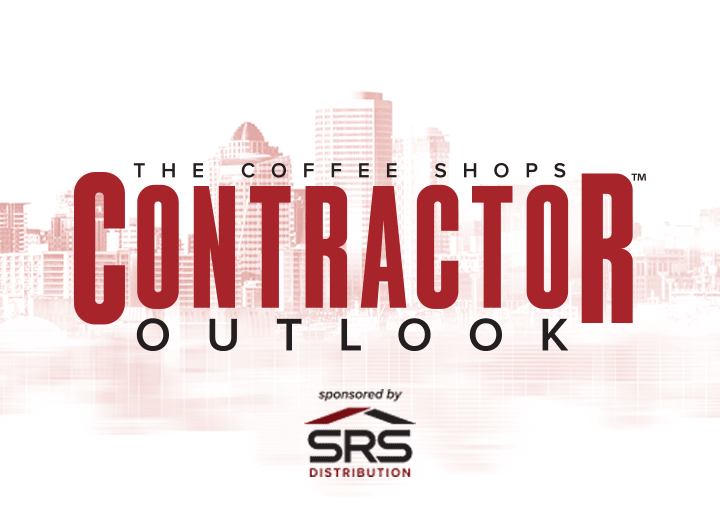


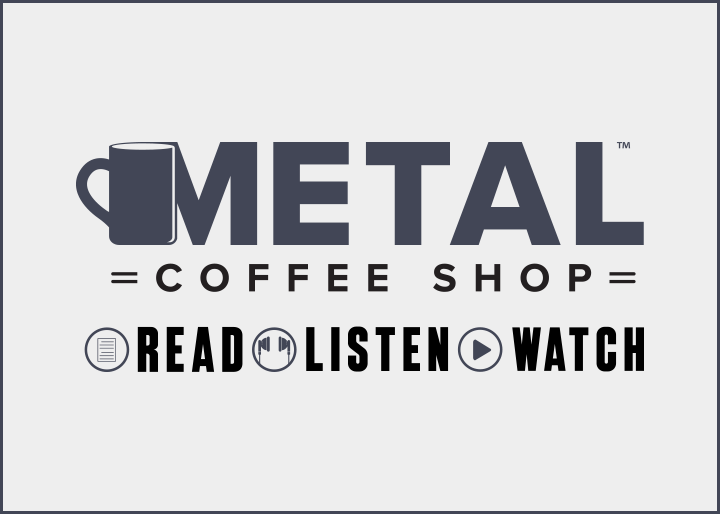




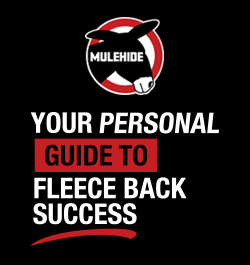
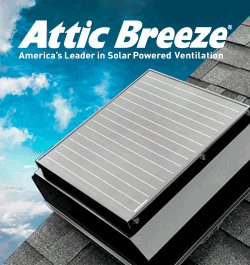

Comments
Leave a Reply
Have an account? Login to leave a comment!
Sign In